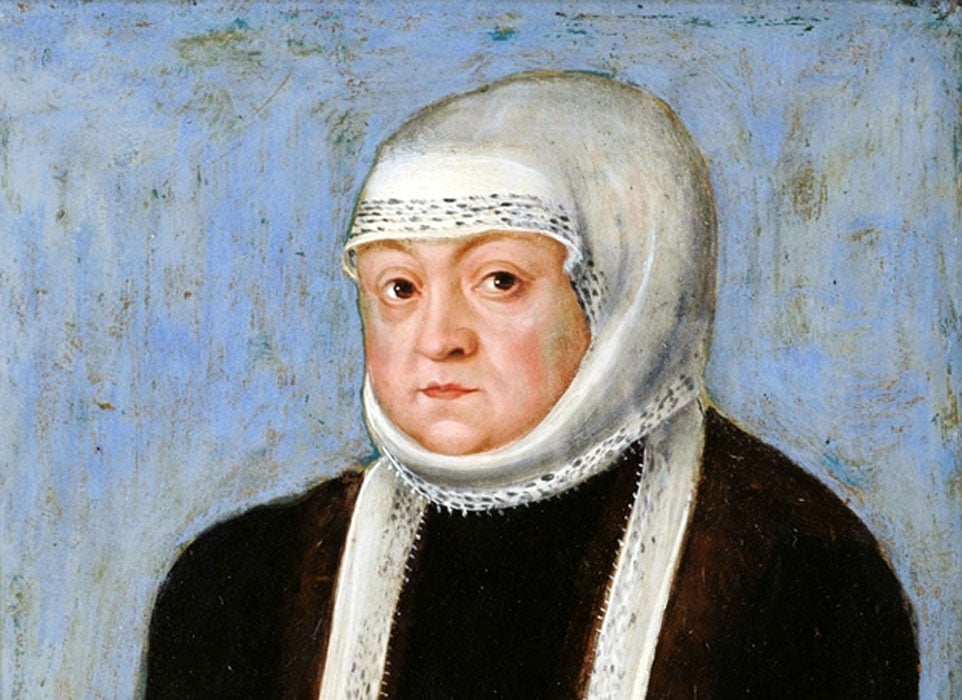Bona Sforza: An Underestimated Queen of a Famous Italian Family
Polish nobles considered her a dangerous woman who had a surprising amount of power over her husband King Sigismund I. Their wedding started a new chapter in the history of Poland, but Bona Sforza was never a favorite queen of her subjects.
Bona Sforza was born on February 2, 1494 in Vigevano, Italy. She grew up surrounded by stories about great world explorers, danger from the Ottoman Empire, and the beauty of the Italian Renaissance. She was very ambitious, well-educated, and charismatic. Her energy and passion for life made her one of the most important queens in Europe during her time but nowadays she seems to be forgotten.
She was a daughter of Gian Galeazzo Sforza, the legal heir of the Duchy of Milan, and his wife Isabella of Naples. Her childhood took place in Milan and Bari, where Isabella and four of her children lived since 1502. The beautiful castle Normanno-Svevo was where 8-year-old Bona started the education which allowed her to be one of the most interesting young ladies in Europe. Her teachers were the famous Italian humanists Antonio de Ferraris and Crisotomo Colonna. She studied mathematics, history, classical literature, Latin, law, theology, geography, natural science, and learned how to play several instruments.

Gian Galeazzo Sforza, c.1483, by Giovanni Ambrogio de Predis. (Public Domain)
When Bona was 24 years old, she left her country and became the second wife of Sigismund I the Old, the king of Poland and Grand Duke of Lithuania. She started her long travel to Crackow (Kraków), to a country with a colder climate and completely different mentality.
A Woman Who Ruled Like a King
If the Polish believed that the young and beautiful lady would be content as just the mother of the king's children and stay far away from politics, they would have been totally wrong. Bona started to be active politically from the moment she became the queen. She didn't understand the social norms in Poland, which was a far less civilized country than the kingdoms of Italy, France, or Spain at the time. Poland’s political position was strong, however, society there still needed to advance.
- Tomoe Gozen - A fearsome Japanese Female Warrior of the 12th Century
- Bloody Mary: The Marriage, Reign, and Death of a Queen of England
- The Powerful Valkyries as Icons of Female Force and Fear
The first months of her stay in Poland were very difficult for Bona. The Italian princess was used to a diet full of fresh fruits, vegetables, and olive oil, but in Poland they ate a lot of meat, which made her sick. Polish cuisine was based on meat, beans, and some strongly-spiced foods. After a few months, she started to grow her own vegetables in the garden near Wawel castle.
At first the Polish nobles did not understand Bona’s diet, but with time, vegetables started to be more popular among Polish people. Nowadays, a basic bunch of vegetables that includes celery, carrot, parsley, and leek is called ‘‘włoszczyzna’’ (Włochy).

Queen Bona's gardens at Wawel Castle. (CC BY 2.5)
After Sigismund's death in 1548, Bona became a very important person in the court of her son – Sigismund II August. He was the last king of the Jagiellon Dynasty, and a disappointment to his mother. He didn't have the impressive skills of his father, which had allowed Sigismund I achieve huge successes as a ruler.
Bona Sforza had six children. Three of her daughters, Isabella, Catherine, and Anna became influential queens of Hungary, Sweden, and Poland. They were well-prepared to rule with their husbands and became important in European political life. Sigismund II August, her only son to survive until adulthood, was a romantic and focused on his marriages and art more than on being a serious king.

Sigismund II Augustus. Painting by Lucas Cranach the Younger. (Public Domain)
Bona was very active in foreign policy. She was opposed to the Habsburg family and supported the actions of the Ottoman Empire. Her correspondence with Hurrem Sultan, legal wife of Suleiman the Magnificent, has been lost, but some details are still well known. It is believed that due to the good relationship between Bona Sforza and Hurrem Sultan, Poland was saved from the attack of the Ottoman Army. Hurrem was a Polish woman who cared about the family of the Polish king. For many years she sent gifts to Sigismund and his son – such as linen underwear and other items of clothing.

16th-century Latin oil painting of Hürrem Sultan, entitled Rosa Solymanni Vxor. (Public Domain)
Bona, much like many important women of her times, was accused by some people to have been a witch. Numerous bishops and nobles were obsessed with the fight against witchcraft. When Bona started to reform the country, allowing herself to be the richest landowner, criticism of her actions increased. The Polish never liked the changes, but Bona supported the advancement of many ideas. Apart from being a protector of scientists and artists, she tried to influence the law as well.
After the death of her husband, Bona moved to Marsovia and created orchards, modern farms, etc. She had many plans but due to a lack of support for her actions most of the reforms she began would go on to fail. Eight years after the death of Sigismund, Bona decided to go back to Bari.

Abdication of Queen Bona, by Szymon Buchbinder. (Public Domain)
The Shadow of the Queen
Bona Sforza was known to be a typical Italian beauty but many of the paintings depicting her were usually by her enemies, so she was often portrayed as a fat and unattractive woman. Many Polish people hoped that she would be remembered as a negative character in the story of the two last kings of the Jagiellon Dynasty. Nonetheless, the achievements of the queen were too big for people to forget about her positive points.
- Caterina Sforza: A Renaissance Warrior Woman That Knew How to Get What She Wanted
- Sigrid the Haughty, Queen Consort of Four Countries and Owner of a Strong Personality
- Christina, The Minerva of the North Who Abdicated Her Throne to Live Life by Her Own Rules

Bona Sforza as a widow in 1551. (Public Domain)
Bona was never very happy in Poland and when she got older she wanted to reunite with her relatives. She went back to Italy, where she hoped to enjoy her beloved art, cuisine, and sun. Unfortunately for her, just one year later she was poisoned by a man named Gian Lorenco Pappacoda. He was her trusted officer, but he betrayed her and murdered her by the orders of King Phillip II of Spain. The king of Spain wanted to avoid repaying a huge debt to the former Polish queen.

Poisoning of Queen Bona by Jan Matejko. (Public Domain)
She died at age 63, on November 19, 1557. One of the most important women of the 16th century was buried in St Nicholas Basilica in Bari, and Poland forgot about Bona for many centuries. Most of her belongings were lost. Until now, there is no monument in memory of this queen in Poland. It seems that she was misunderstood and not appreciated by her former subjects, a situation that is not likely to change much in the future.
Top Image: Queen Mother Bona by Lucas Cranach the Younger. Source: Public Domain
References:
Maria Bogucka, Bona Sforza, 2009.
Danuta Wójcik-Góralska, Niedoceniona królowa, 1987.
Halina Auderska, Smok w herbie. Warszawa,1989.
http://wyborcza.pl/alehistoria/1,136807,15704156,Trucizna_krolowej_Bony.html



















Comments
Great article Natalia and wonderful to see Polish history being shown in a European context, not as something separate and only for Poles to read about